HEC-FIA is a single event consequence estimation software package designed to deterministically analyze an event (e.g., a dam failure, historic floods, or hypothetical floods)
and determine the resulting consequences. HEC-FIA differs from HEC-FDA by utilizing the entire hydrograph of the single event, whereas HEC-FDA analyzes only the peak of many events in a Monte
Carlo simulation. This document summarizes some of the features of HEC-FIA.
Structure Loss Calculations
The standard economic loss calculations are handled in HEC-FIA for structure, content, car, and other by structure occupancy type.
The structure loss calculations are calculated structure by structure for each event simulated. Users can import structure inventories from a variety of sources, including the National Structure Inventory (NSI).
Multiple structure inventories can be defined in a single study. The ability to use inventories from multiple sources assists in scaling from lesser quality structure inventories to higher quality structure
inventories throughout the feasibility project timeline; this also facilitates the evaluation of nonstructural measures that impact the location or characterization of structures within the floodplain.

Back to the top
Agriculture Loss Calculations
Agricultural loss calculations are possible within HEC-FIA. Damage calculations are dependent on both duration and timing of the event.
Crops can be entered as area-elevation curves by crop type, or by adding NASS cropland data layers which represent the geospatial
location and type of crops in the study area. The NASS data specifies the spatial location of crops. Additionally, users will have
to define the production function, duration damage functions, crop prices, yields, and harvest costs.
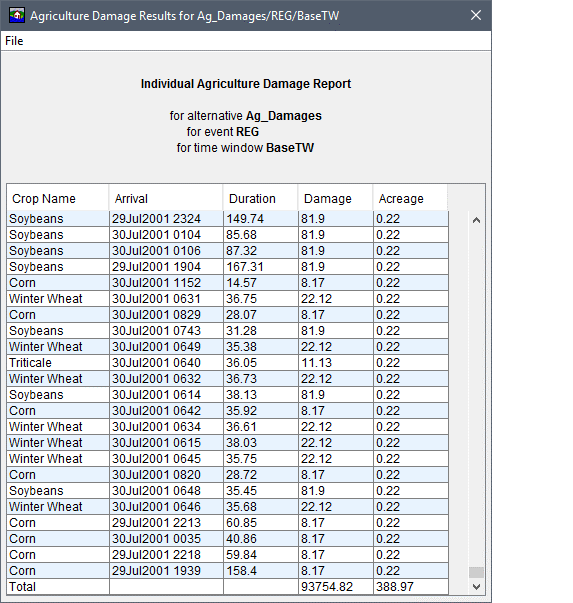
Back to the top
Life Loss Calculations
A simplified LifeSim approach is available in HEC-FIA to estimate life loss when the correct information is provided in terms
of hydraulic data and structure inventory data. This computation is intended to inform the risk posed to people from catastrophic
or hypothetical flood events.

Back to the top
Flood Damages Reduced
The Flood Damages Reduced computation type in HEC-FIA allows users compute USACE's Value to the Nation for flood risk reduction projects.
These values are reported annually to Congress in the Flood Damages Reduced report. Flood damages reduced computations allow HEC-FIA to
produce reports that support a better understanding of how much each project evaluated contributed to reducing flood losses in a system for a given event.
This feature utilizes a structure inventory instead of aggregated stage damage functions, and leverages the regulated and unregulated (and reservoir benefit allocation)
computed by HEC-ResSim. HEC-RAS storage areas are used to identify "Leveed" areas. Multiple Flood Damages Reduced inundation configurations are included in HEC-FIA.
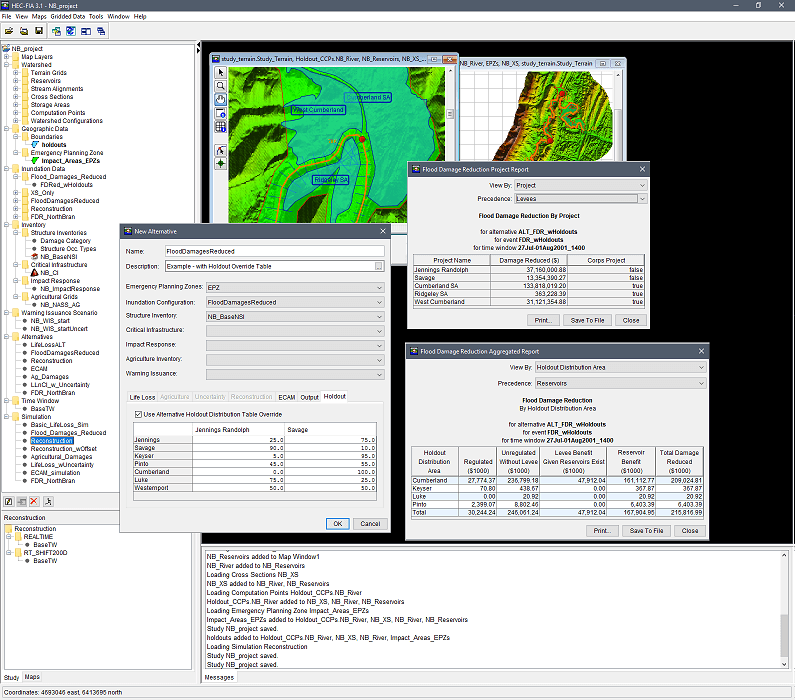
In the Holdout Cross Sections Inundation configuration, structures in Leveed Areas compute their stage using the stage hydrograph associated with a storage area.
In the no levee scenario, the stage hydrograph from a storage area is ignored, and stage is computed based on the stream stationing of a structure.
In the Holdout Grids Inundation configuration, structures in Leveed Areas compute their stage based on the associated HEC-RAS max depth grid. In the no levee scenario,
the stage at the structure location is ignored, and the stage is computed from the associated HEC-RAS max depth grid at the stream center line. A reduction factor
can also be applied for each Leveed Area to reduce the stage in the no levee scenario.
The Holdout RAS – HDF Event inundation configuration was added to provide more flexibility in the computation of flood damages reduced.
This new compute is intended for use in watersheds with large leveed areas, or leveed areas with complex hydraulics where the current
without levee damage estimations in HEC-FIA are not appropriate. Instead of accepting only 2 hydraulic inputs, regulated and unregulated,
this configuration accepts 2 additional hydraulic inputs for the regulated without levee and the unregulated without conditions.
This allows a user to compute the without levee hydraulics in HEC-RAS, instead of relying on the without levee estimation in HEC-FIA.
In order to reduce compute time and storage needs, this inundation configuration accepts native HDF HEC-RAS outputs for the four scenarios.
The Holdout RAS - HDF configuration also supports agricultural flood damages reduced in addition to structures. This improvement streamlines flood damages reduced
computations by removing the need for manual agriculture FDR computations outside of HEC-FIA.

Back to the top
Critical Infrastructure
HEC-FIA has the capability to define Critical Infrastructure elements (see figure below). These elements are point based elements that have a beginning damage elevation, a Sector, and SubSector. Critical Infrastructure elements represent objects in the floodplain that have an impact on the economy that may not be fully represented by the depreciated replacement value of the object. While structures use Damage Categories and Occupancy types to group similar structures together, critical infrastructure elements use Sectors and SubSectors. HEC-FIA reports the severity of the hydraulic event at each infrastructure element that is impacted by the modeled flood. Data to support the critical infrastructure must be imported by point shapefile.
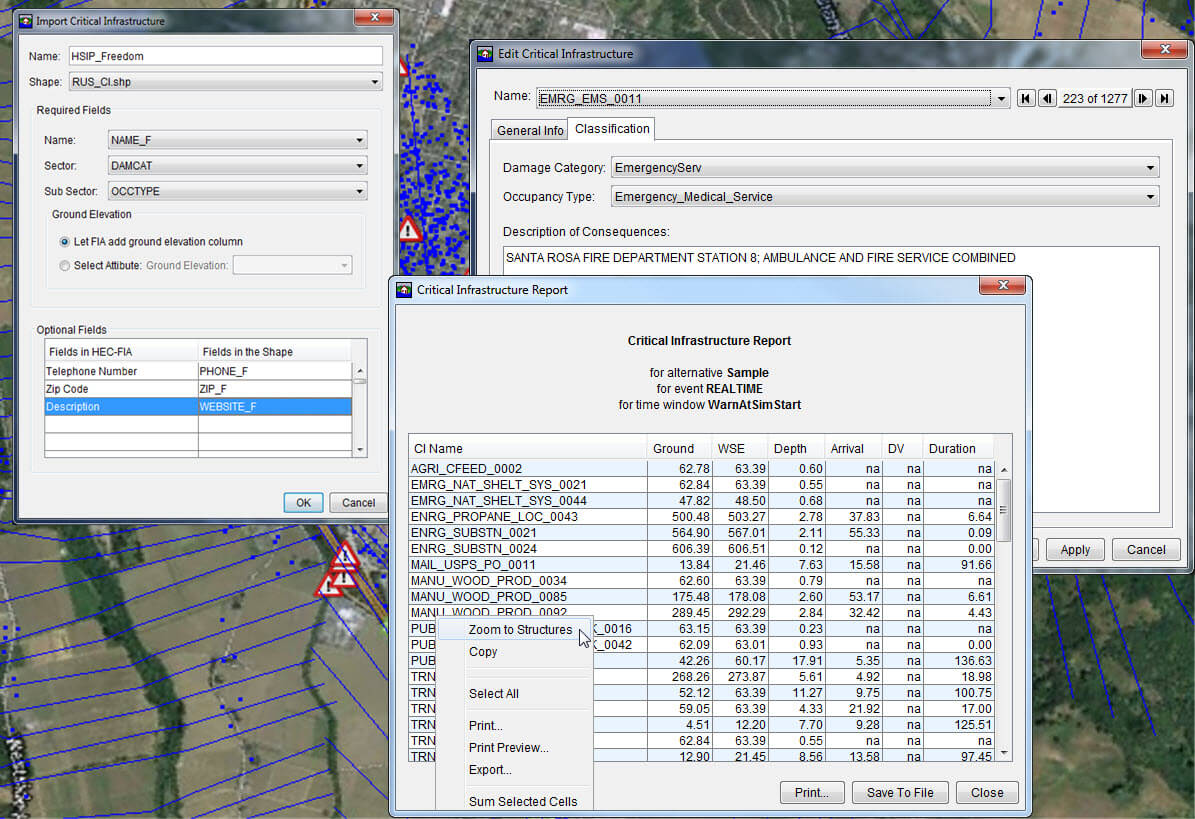
Back to the top
Indirect Economic Losses with ECAM
HEC-FIA incorporated the Economic Consequence Assessment Model (ECAM) developed by Dr. Miles Light at University of Colorado Boulder, Boulder, CO. The ECAM tool describes indirect losses to the economy from catastrophic events like dam and levee failures. ECAM is a computable general equilibrium (CGE) model that takes the inputs of reductions in the production factors of the economy (Capital and Labor), and produces changes in the labor force and output of the impacted sectors of the economy for a given county. HEC-FIA produces the reductions in the production factors based on the direct economic loss calculations for structures and life loss. ECAM produces a report (see figure below) by county of the regional changes in Output and Employment by sector.
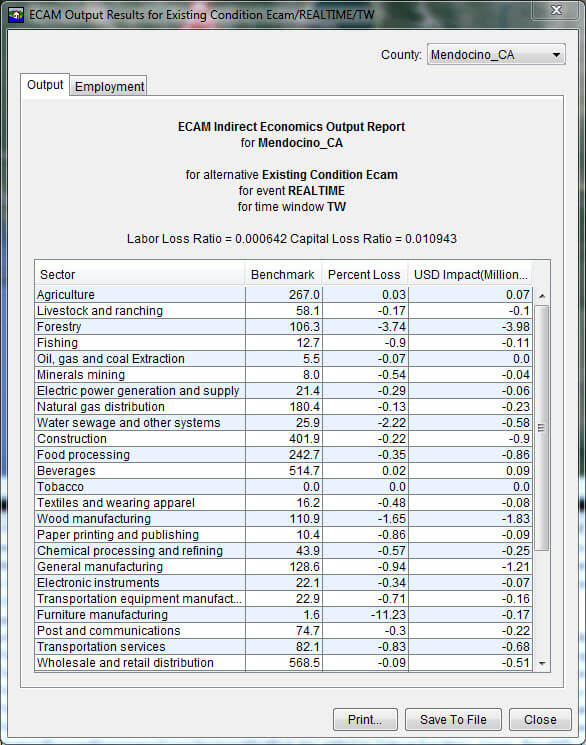
Back to the top
Incorporating Uncertainty
HEC-FIA allows for the user to include uncertainty in the computations, which allows users to describe various inputs with continuous
distributions instead of single values. These inputs can be sampled using a Monte Carlo method, which generates a range of possible
results for the simulated flood event. A few examples are shown in the figure below.
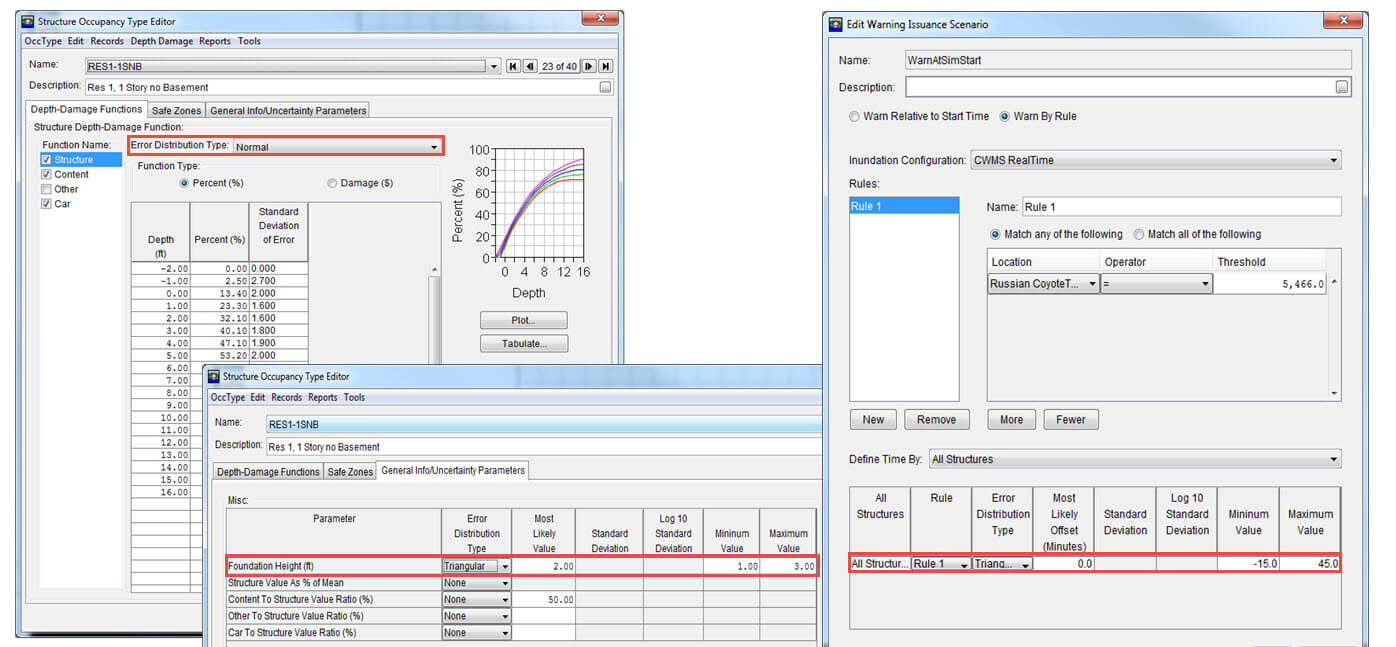
Below is a list of the parameters for which uncertainty can be described using a continuous distribution:
- Structure Value
- Content Value
- Foundation Height
- Depth Damage Relationships
- Mobilization Relationships
- Warning Issuance Time
Back to the top
Reconstruction
HEC-FIA has the capability to evaluate multiple events in sequence as a single simulation. This feature facilitates
HEC-FIA in computing flood damages at a structure that may have been damaged in an earlier event.
HEC-FIA allows the user to specify:
- Maximum Damage thresholds
- Maximum Rebuild thresholds
- No Rebuilding zones
These features allow the user flexibility to simulate damages for events and evaluate the impact of various policies
governing wise use of the floodplain. Each structure is required to have a time required to completely rebuild a structure
so that the computation of damages on subsequent events will properly evaluate the value of the built environment
given previous flooding events.
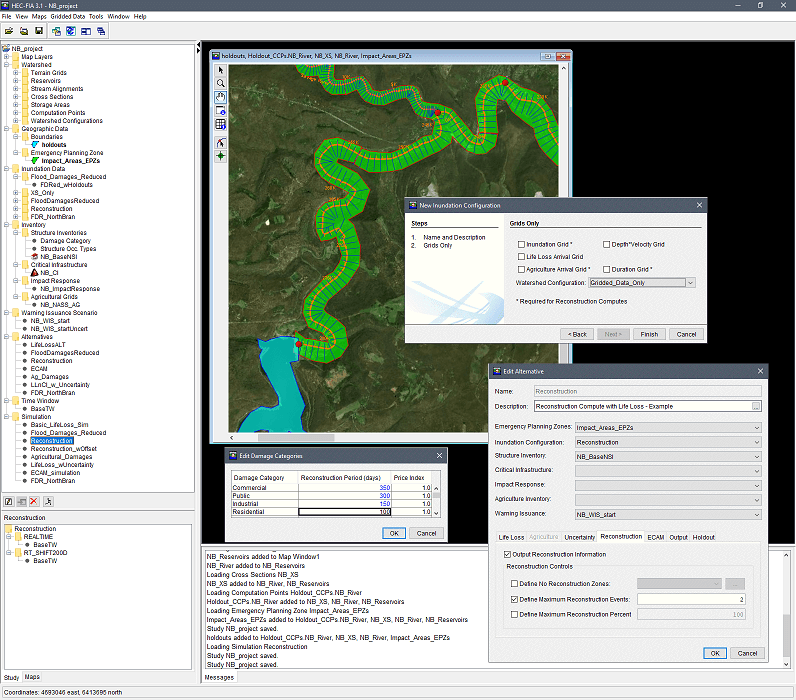
Back to the top